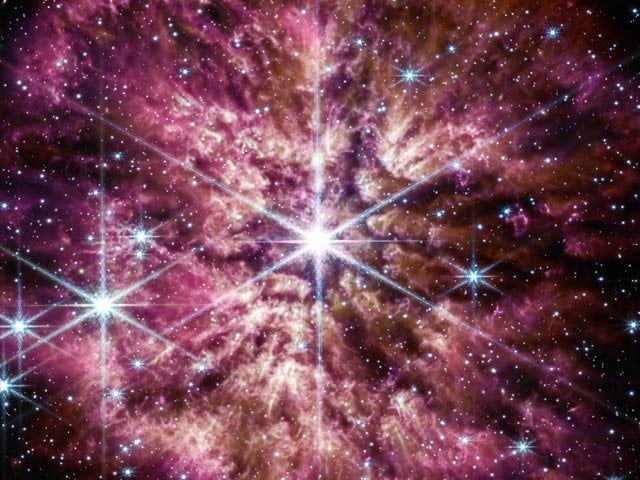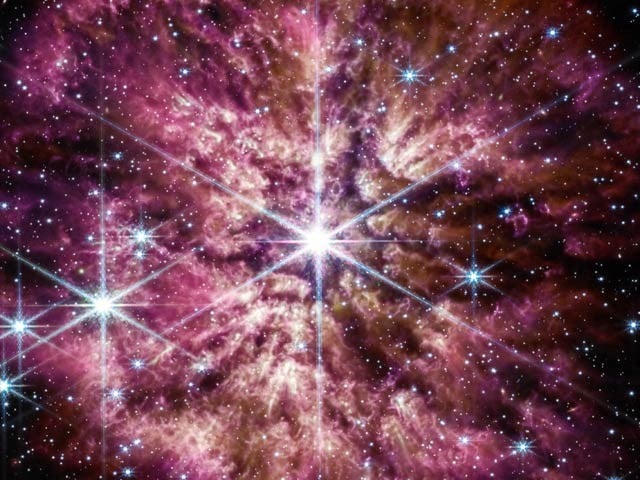
The James Webb Space Telescope has captured a stunning image of a massive giant star entering its final stages. Photo: Courtesy of NASA
Pasadena, California: The James Webb Space Telescope continues to receive amazing images, and now the same team has captured a picture of a star taking its final hiccup.
It has been named the Wolf’s Runt star, located 15,000 light-years away in the Centauri (Sagittarius) cluster. It should be noted that the James Webb Space Telescope captures images of the early or earliest universe by observing infrared radiation, and this is why we are seeing images of the early universe slightly after the Big Bang.
However, looking at the wolf-ray star we can learn a lot about the end of stars and the evolution of the universe itself. The reason is that very few massive stars would have an end like a wolf-rayt. By researching this state, we can learn a lot about the evolution of stars. At this time, the star is losing its outer layer and this is why large amounts of dust and gas can be seen on the periphery.
(function(d, s, id){
var js, fjs = d.getElementsByTagName(s)[0];
if (d.getElementById(id)) {return;}
js = d.createElement(s); js.id = id;
js.src = “//connect.facebook.net/en_US/sdk.js#xfbml=1&version=v2.3&appId=770767426360150”;
fjs.parentNode.insertBefore(js, fjs);
}(document, ‘script’, ‘facebook-jssdk’));
(function(d, s, id) {
var js, fjs = d.getElementsByTagName(s)[0];
if (d.getElementById(id)) return;
js = d.createElement(s); js.id = id;
js.src = “//connect.facebook.net/en_GB/sdk.js#xfbml=1&version=v2.7”;
fjs.parentNode.insertBefore(js, fjs);
}(document, ‘script’, ‘facebook-jssdk’));



